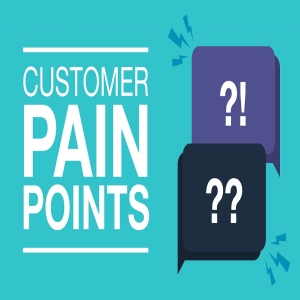Customer pain points mapping for successful jobs-to-be-done strategyPosted by Himanshu Goyal on November 29th, 2022  What if I tell you that a customer buys an earphone because he likes to ride a bike? Sounds irrelevant? Then, you’re not mapping your customer’s pain points effectively. We live in a consumer world where customers have various unimaginable needs or jobs to be done without any connecting relationship between the product and the ideal customers. But, such businesses generate more revenue when they implement the jobs-to-be-done theory in mapping their ideal customers and pain points. The difference between the traditional approach and this theory is you develop a flexible customer persona with all the pain points directly from the customer’s perspective. Let’s understand what creating a successful customer mapping journey is through the jobs-to-be-done framework. What To Include In Customer Pain Points Mapping?Buying ProcessA customer goes through various steps before deciding to purchase your product or service. The buying process journey starts with a need and the degree of that want to decide which solution to purchase to complete the job in the best possible way for that buyer.
Answering these questions can trace an ideal buyer process path. Customer ActionsThis section includes where the customer touches its pain points and interacts in what manner(s). They may be sharing those details with their friends and family and finding the easiest and fastest ways to fulfil those in the awareness stage. This stage also involves a demo of your product or service, which is the most crucial part of the buying journey. If your customer is satisfied, they will make the purchase. And then, the hunt begins to keep customers loyal, which needs more interaction. Emotional Pain PointsWhile solving any problem or pain point, the customer feels some emotion - anger, despair, frustration, needy, etc. For example, if your mobile payment wallet doesn’t work and you’re standing in a long queue, you feel like hitting the app with a tight slap. Therefore, understanding your customer’s pain points and addressing them at the right time is the key to successful business growth. You must add those emotional points to your buying journey and design products addressing those pains. Customer-favoured SolutionsAgain, the customer doesn’t just want you to address their pain points and design a solution suitable for them according to their consumer psychology. The product should deliver the service at the right time, correctly, and at the correct cost according to your target customer’s desired solutions. For example, if your product wants to address the pain point of a long-standing queue for concerts, and you design a solution that allows them to book the spot online. But, your customers don’t buy that service as they might be facing app crashing issues or like standing in the queue and enjoying the waiting time. If you design a solution that provides them with a live feed of the concert while waiting in the queue or some snack options nearby, they will prefer that solution more. ConclusionThinking and planning your customer pain points mapping is an obsolete and ineffective practice. Using the jobs to be done theory for defining your customer’s pain points provides the business with the customer’s vision of the solution they want, and it helps address their jobs better. Like it? Share it!More by this author |


